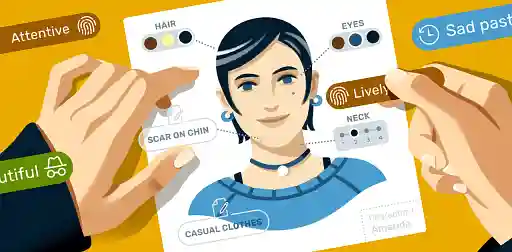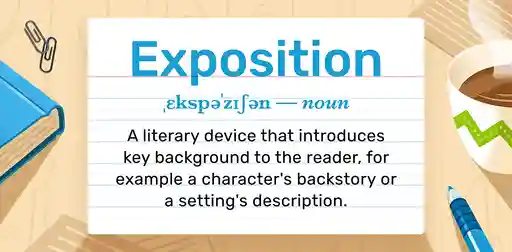Posted on May 30, 2019
What Are Extended Metaphors? How to Use Them, Plus Examples
About the author
Reedsy's editorial team is a diverse group of industry experts devoted to helping authors write and publish beautiful books.
More about the Reedsy Editorial Team →Martin Cavannagh
Head of Content at Reedsy, Martin has spent over eight years helping writers turn their ambitions into reality. As a voice in the indie publishing space, he has written for a number of outlets and spoken at conferences, including the 2024 Writers Summit at the London Book Fair.
View profile →Of all the literary devices that writers use to bring their stories to life, a metaphor remains one of the most popular. The act of comparing one thing to another may sound simple, but it's proved popular over the centuries, as authors, poets, songwriters and everyday people wield it to explain something in non-literal terms.

FREE RESOURCE
Literary Devices Cheatsheet
Master these 40+ devices to level up your writing skills.
But what happens when a metaphor expands and becomes more than just a passing reference? Well, that’s exactly what this post is all about: the extended metaphor.
What is an extended metaphor?
An extended metaphor is a rhetorical technique that explains a concept by directly mentioning another concept and drawing multiple parallels between them. It is often used to explain a complex idea — allowing readers or listeners to visualize it in terms that they already understand.
In a sense, it’s exactly what it says on the tin: a metaphor that takes the comparison a few steps further. As an example, if you wanted to explain how a traditional publishing house works with an author, you might compare it to a football team like so:
- The author is the quarterback, making the plays and taking the glory;
- The acquiring editor is the coach, calling the shots and giving the QB a team that compliments his skill set; and
- The proofreader is the offensive tackle, protecting the ball-carrier from outside attacks.

Of course, every extended metaphor has its limits. You very rarely find perfect analogies that seamlessly map one idea onto another — so this is where someone might say that a metaphor is “falling apart”:
- The publicist is the, er, punter… helping the team get better field position after a few setbacks?
What is the effect of using extended metaphors?
You may already have picked up on a few key reasons why writers use extended metaphors.
They can help explain a complex idea in simple terms. The example of the football team is an attempt to communicate the interpersonal dynamics of an author-publisher relationship
Some authors use them for humor — purposefully mining the absurdity of a torturously drawn-out metaphor for comedic effect. After a while, comparing a government cabinet to V8 engine just gets silly: “The Secretary of Agriculture is the carburetor — supplying the pistons (the population) with fuel (grain) and air (dairy).”
Perhaps most importantly, writers use extended metaphors to evoke emotions and imagery when they’re writing about something that’s abstract. One of the most commonly cited metaphors comes from Shakespeare’s As You Like It. Jaque, a cynical nobleman, ruminates on the idea of free will and the significance of the individual through the metaphor of a play.
All the world’s a stage,
And all the men and women merely players;
They have their exits and their entrances;
And one man in his time plays many parts,
His acts being seven ages.
Instead of waxing on about predeterminism, Shakespeare asks you to think of an actor following the stage directions and reading his lines. He deals with an intellectual idea by imbuing it with an emotional and visual hook. Audiences might struggle to “see” existential dread — but they can easily imagine metaphorical actors going through the motions night after night (and twice on Wednesdays).

Need an editor who knows how to use a metaphor?
The best freelance editors are on Reedsy. Sign up for free and meet them.
Learn how Reedsy can help you craft a beautiful book.
9 examples of extended metaphors
In the proud tradition of “show don’t tell,” let’s dig into some extended metaphor examples that we’ve taken from literature, poetry, film, and music. We’ll also decipher what they mean — just so we’re not left in the dark (metaphor!).
Example #1: Romeo and Juliet by William Shakespeare
But soft! What light through yonder window breaks?
It is the East, and Juliet is the sun!
Arise, fair sun, and kill the envious moon,
Who is already sick and pale with grief.
Decoded: In this soliloquy, Romeo compares the object of his affection to the sun: a radiant, untouchable figure. Extending the analogy, he wishes that she would rise quicker and chase away the moon, which pales in comparison to the beauty of Juliet.
Example #2: “Stillborn” by Sylvia Plath
These poems do not live: it's a sad diagnosis.
They grew their toes and fingers well enough,
Their little foreheads bulged with concentration.
If they missed out on walking about like people
It wasn't for any lack of mother-love.
Decoded: In a particularly morbid example of her work, Plath describes the pain of her craft — comparing the labor of writing a disappointing poem with the trauma of losing a child at birth. One can imagine that the fingers and toes are meant to represent the rhythm of her verse and the concepts behind a poem: conceptually perfect, yet somehow tragically lacking.
Example #3: “Hope Is the Thing With Feathers” by Emily Dickinson

Hope is the thing with feathers
That perches in the soul,
And sings the tune — without the words,
And never stops at all,
And sore must be the storm
That could abash the little bird
That kept so many warm.
Decoded: In a similar vein, Alexander Pope once wrote that “Hope springs eternal in the human breast; Man never Is, but always To be blest.” One could argue that Dickinson brings the same idea to life — but with greater impact through her extended metaphor. The visual that she conjures of a singing bird, bashed about in a storm is something far more unforgettable — and likely to resonate with the reader.
Example #4: Us by Jordan Peele
**Spoilers ahead**
In the 2019 domestic horror film, an affluent African-American family is terrorized by a family of twisted doppelgangers. As the story unfolds, we learn that there is an entire nation of ‘tethered’ twins who live underground — and now they’re looking to separate themselves from their above-ground counterparts.
Decoded: Peele’s writing is careful not to make the doppelgangers a metaphor for any single thing. However, many interpret them to represent America’s underclass — such as largely ignored immigrant communities who toil so that the upper-classes may live in comfort.
Just as in poetry, some of the best songs often revolve around a central metaphor. After all, there are only so many ways you can write a literal song about falling in love.
Example #5: “Hound Dog,” Elvis Presley
You ain't nothin' but a hound dog
Cryin' all the time
You ain't nothin' but a hound dog
Cryin' all the time
Well, you ain't never caught a rabbit and you ain't no friend of mine
Decoded: Presley disparages the subject of the song, calling them a dog. He then extends the analogy by saying that they have also failed to catch a rabbit — telling them that they are worthless and classless. The King could be a cold, cold man.
Example #6: “Life is a Highway,” Rascal Flatts
Life's like a road that you travel on
When there's one day here and the next day gone
Sometimes you bend and sometimes you stand
Sometimes you turn your back to the wind
Decoded: The title sorts of decodes it all for you. Life is transient: it turns unexpectedly and often it grinds to a halt. That being said, turning one’s back to the wind is more of a nautical concept, which is where the metaphor breaks down.
Example #7: “Fish”, Aaron Watson
Then you throw out a line, reel it back in
If you catch a boot, you gotta cast it out again
You know you’ll never catch a keeper
If you sit around and cry
So get back in that boat and fish
Decoded: Playing on the old saying of “plenty more fish in the sea,” Watson’s song plays up the angling angle by throwing in more fishing references. The boot presumably refers to an unsuitable partner.
Example #8: “One on One,” Daryl Hall & John Oates
I'm tired of playing on the team
It seems I don't get time out anymore
What a change if we set the pace face to face
No one even trying to score, oh
Decoded: Few people get that the literal reading of this song is about basketball — even the title is a direct hoops reference. However, within the context of the music, we can infer that Daryl Hall is tired of treating romance as a “team game” (rock and roll!) and is ready to settle down for some one-on-one.
Example #9: “The Gambler,” Kenny Rogers
You've got to know when to hold 'em
Know when to fold 'em
Know when to walk away
And know when to run
You never count your money
When you're sittin' at the table
There'll be time enough for countin'
When the dealin's done
Decoded: The protagonist of the song meets a gambler on the train. Having won all of the singer’s money, the card sharp offers gambling tips — but in this context, poker is a metaphor for life!
And there you have it — a cornucopia of extended metaphors, filled to the brim with delicious analogies. The next time you’re writing something, why not try one out for yourself? You might decide it’s not your style or you may find that they’re just your cup of tea (okay, last metaphor).








1 response
Coline Harmon says:
14/06/2019 – 16:25
Would these methods work best as part of dialogue? I'm writing a story, and it seems like I should have my characters speak the metaphors, most of the time.